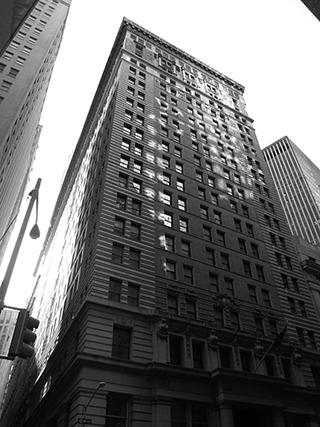1900: Plans filed for NYC’s then-largest office building
The Alliance Realty Company assumed the title deed for two plots in the Financial District, the New York Times reported 119 years ago this month. The deal cost Alliance about $1.8 million. The 20-story Broad Exchange Building was built over the next two years at a cost of $3.25 million. At the time, it would become the city’s largest office building. The Wall Street Journal reported that Broad Exchange contained 40 offices on each floor and was the most “sought-after address” for brokers and bankers who frequented the outdoor trading floor that was a forerunner to the New York Stock Exchange. At a massive 326,500 square feet, Broad Exchange was about 1.5 times larger than any other office tower in the city. When the edifice was completed in 1902, it was Manhattan’s highest-valued property. Broad Exchange came to represent one of the most famous examples of speculative commercial development with investors, as opposed to building owners, leading the project. The building was named a city landmark in 2000. LCOR bought Broad Exchange for $170 million in 2012 and began converting it into condominiums.
1932: Midtown office leasing takes off despite Great Depression
A slew of new leases were signed within days across Midtown Manhattan 87 years ago this month, according to the New York Times. The transaction volume was an encouraging sign to brokers and landlords three years into the Great Depression. The activity was predominantly driven by textile companies such as the American Woolen Company, which reportedly signed “one of the largest and most important” leases for the real estate industry. The company paid an undisclosed price for the 16th floor of the new 42-story Continental Building at 1450 Broadway. The lease was significant because it put the fabric manufacturer near the “cutting-up trades,” better known as the garment industry. Most clothes makers had moved their operations to Manhattan’s West Side. The real estate industry — hungry for more deals — speculated that textile manufacturers, particularly wool companies, would eventually also move westward. American Woolen’s lease signaled the possible coming of a new wave of business. By the late 1930s, the migration was complete with the area between Sixth and Ninth avenues and 25th and 42nd streets adopting its current name: the Garment District.

Donald Elliott
1969: Proposed Midtown rezoning ends amid opposition, protests
The City Planning Commission withdrew part of its 17-acre proposal to rezone commercial land along Sixth Avenue 50 years ago this month, according to the New York Times. The plan was meant to spur new residential construction amid “concern over the serious shortage of apartments in Manhattan,” said then-chairman Donald Elliott. Commercial stretches along Second, Third and Sixth avenues would be rezoned as residential, but Sixth Avenue was dropped from the plan after a petition signed by 113 planners accused the city of yielding to “real estate speculators.” As public pressure increased, proposed changes were eventually dropped for Second and Third avenues. The group of planners and one commissioner, Beverly Moss Spatt, said increased density allowances for developers would fuel luxury housing construction, incentivizing landlords to sell out and boost prices. Spatt said low-income residents living in units built on top of ground-floor manufacturing and retail businesses would be displaced and 4,200 jobs lost. The failed zoning proposal came as New York City Mayor John Lindsay negotiated the precursor to what would become today’s rent stabilization laws.
